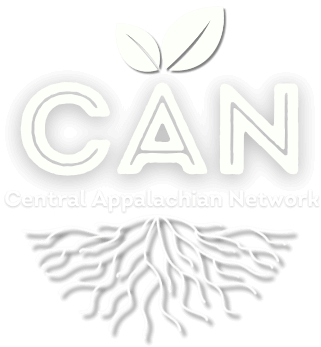
Regional Food Business Center Grant Invests in Appalachia with Funding for Food and Farm Businesses
The US government’s largest single investment in the Appalachian food system just hit our region. The U.S. Department of Agriculture (USDA) has invested $42 million in Central Appalachia to support food and farm businesses with market entry and strengthen existing connections with urban markets through increased efficiency in aggregation and distribution, meaning food and farm businesses can sell more products to more people.
“This funding is significant for the Appalachian region first and foremost because $17.5M will go directly to small and medium farms and food businesses over the next five years,” said grant partner Rural Action Chief Program Officer Joe Brehm. “This will enable producers and food businesses to invest in scaling up operations, accessing new markets, and strengthening local food systems. Second, it will provide sufficient capacity to the organizations and networks like CAN who have been working towards this type of investment for nearly 30 years.”
The grant was awarded to Rural Action on behalf of the Central Appalachian Network to assist with grant writing support, mentoring, business planning services, coalition building, and access to land. The organization will act as a central hub to ensure fair and just grant deployment.
The nonprofit organizations in the region, who are the partners on this grant, have been doing the work for decades but on shoestring budgets. This hard work has built a tremendous foundation for what the Regional Food Center can become. With this grant, nonprofits across Central Appalachia will finally have the financial resources needed to do it on a bigger scale. Partners and collaborators on this grant include Mountain Association, Chatham University, Appalachian Sustainable Development, Partner Community Capital, Appalachian Center for Economic Networks (ACEnet), Kentucky Center for Agriculture and Rural Development (KCARD), New Roots Community Farm, Coalfield Development Corporation, Economic Development Greater East Incorporated, Community Farm Alliance, Agrarian Trust, Appalachian Resource Conservation and Development Council, Grow Ohio Valley, T&T Organics, Black Soil, Invest Appalachia, Dialogue and Design, Rural Support Partners, Community Food Initiatives. More information about the project can be found in Rural Action’s Summary.
“I feel excited about this grant both as a beginning farmer and a nonprofit employee,” said CAN Beginning Farmer Co-Chair Molly Sowash. “This direct and unencumbered investment in farm and food businesses and its support of the practitioners working alongside farmers will go far to build a regional food system from the ground up.”
Farmers and producers in the region have much to gain from this historic investment. Large grants will be game-changers in the coming years. Once the program is underway, producers will benefit in two ways.
- Producers will be able to apply for sub-awards of up to $100,000 to purchase equipment, hire new staff, or overcome other barriers to growth.
- The organizations involved will be working to build new market opportunities, provide a variety of technical assistance–taking advantage of other USDA programs, for example, developing value-added products, etc.–and share best practices not only across the Appalachia Regional Food Business Center but also sharing across the country as we learn from other RFBCs.
This grant is historic for the region and every organization involved. The fruit of this labor will be reaped for generations to come.
“The first thing we need to thank is the land itself, as there is no local food system without it,” said Brehm. “Second, I am grateful for all of the farmers and small businesses who are already taking big risks to feed their communities. Third, I feel a great deal of gratitude to those who have spent a big part of their career creating the foundation for this work. Last but not least, I’m definitely grateful for the commitment from USDA to fund this work at an unprecedented scale across the country. It’s clear from their communication and from interactions with this staff that they are serious about food system resilience, and we are all chomping at the bit to take this work to the next level in partnership with USDA.”
Thank you to Rural Action for assisting with this blog post.
